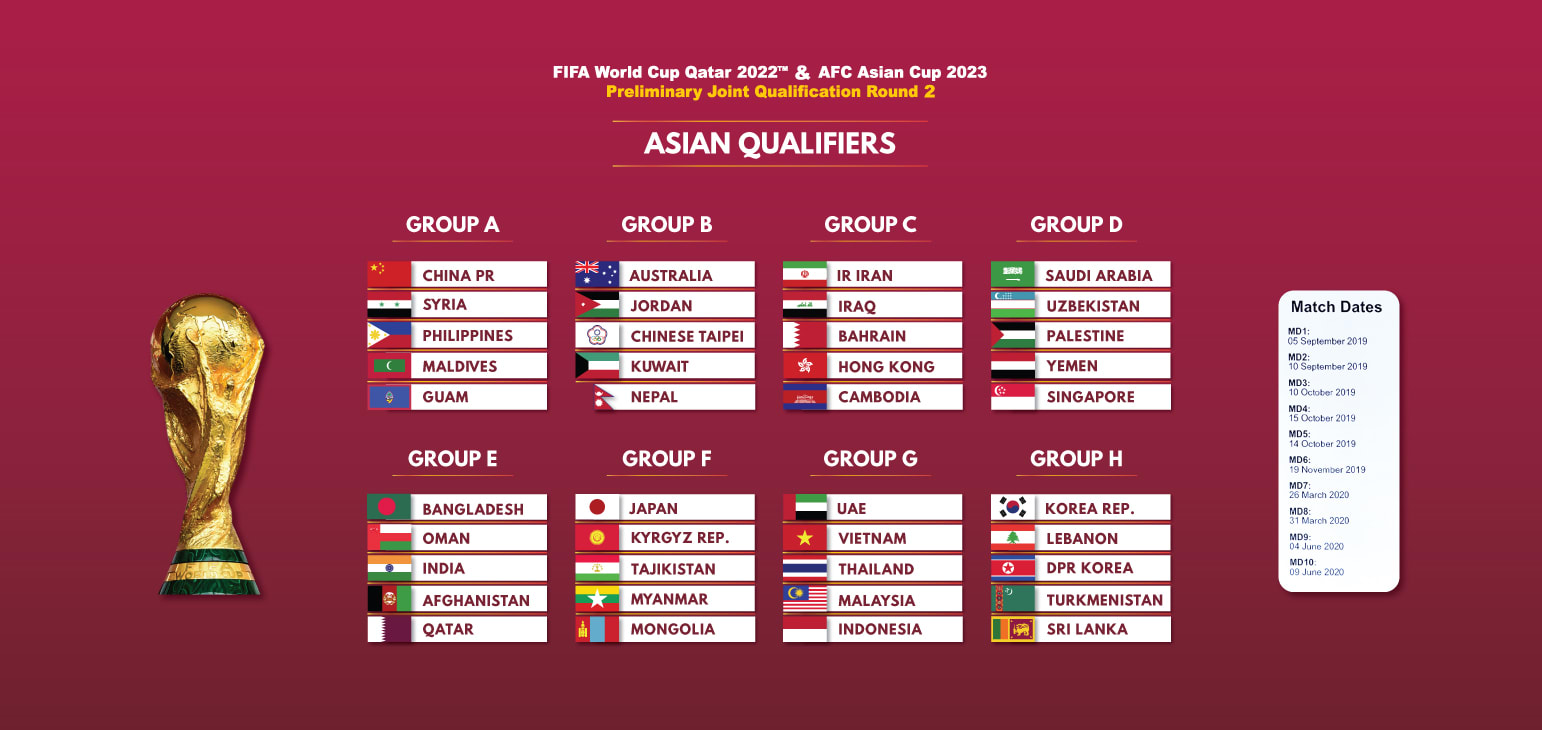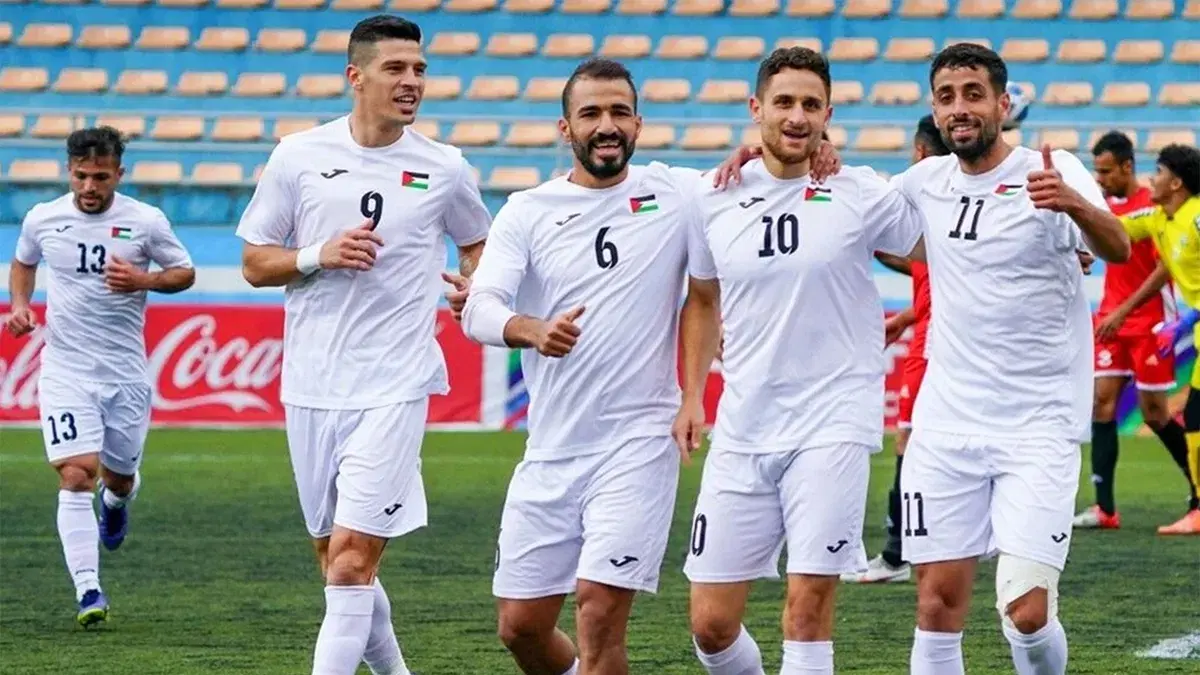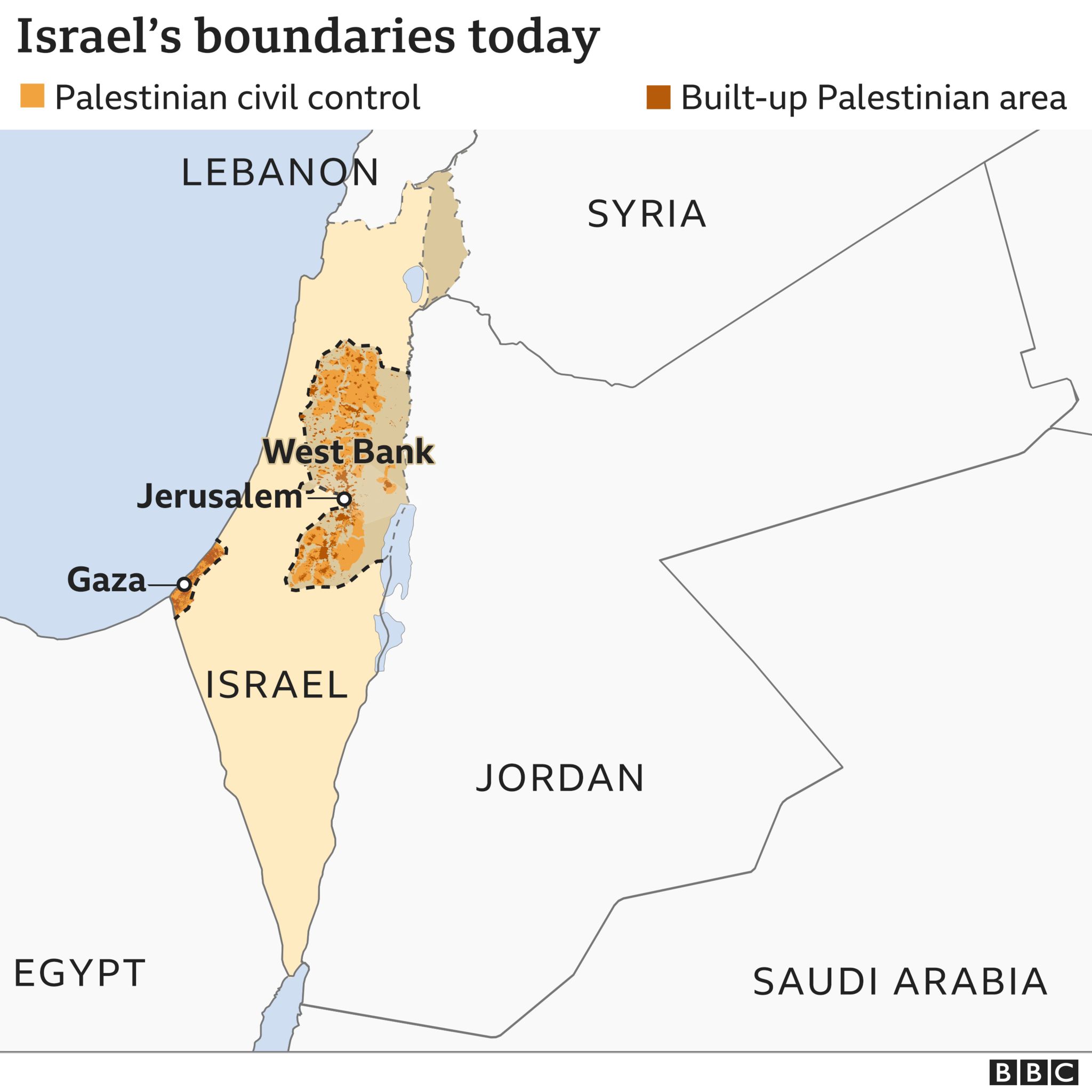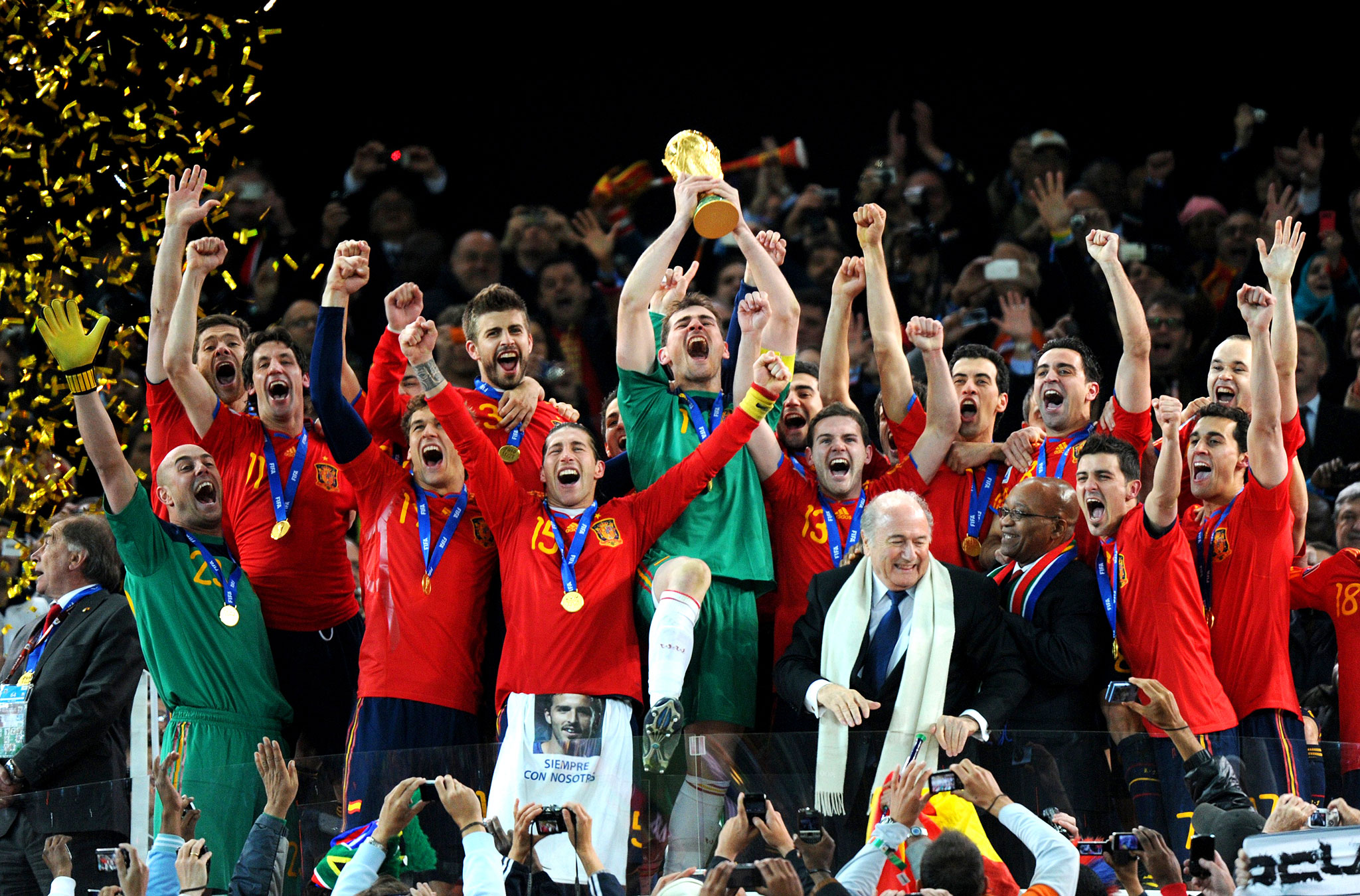Israel vs Palestine World Cup: Imagine the roar of the crowd, the tension on the pitch, the clash of cultures – and the potential for both unprecedented unity and explosive conflict. This hypothetical match throws a spotlight on a deeply complex geopolitical reality, forcing us to consider not just the athletic contest, but the profound historical, political, and social implications involved.
The very idea sparks debate: could a football match bridge the seemingly unbridgeable divide, or would it exacerbate existing tensions, transforming the beautiful game into a volatile battlefield?
From crafting hypothetical team rosters reflecting the demographics and potential controversies to exploring the potential security nightmares of hosting such a match, we’ll delve into every facet of this fascinating – and potentially explosive – scenario. We’ll examine the potential media frenzy, the impact on international relations, and the role sports could play (or fail to play) in conflict resolution.
Get ready for a rollercoaster ride through history, politics, and the unpredictable world of football.
Historical Context of the Conflict
The Israeli-Palestinian conflict is a deeply rooted and complex issue with a long and often violent history. Understanding its intricacies is crucial to comprehending the hypothetical scenario of a World Cup match between teams representing Israel and Palestine. This historical context encompasses decades of conflict, shaped by competing narratives, shifting geopolitical alliances, and persistent unresolved issues.The conflict’s origins are intertwined with the Zionist movement’s aspiration to establish a Jewish homeland in Palestine, a region then under Ottoman rule.
Simultaneously, Palestinian Arabs, who constituted the majority of the population, sought self-determination and opposed what they perceived as an encroachment on their land and rights. This fundamental clash of aspirations lies at the heart of the ongoing conflict.
Key Events Leading to a Hypothetical World Cup Match
The timeline of key events is extensive and complex, but several pivotal moments significantly shaped the conflict’s trajectory. These events contributed to the deeply entrenched positions held by both sides, making a peaceful resolution exceptionally challenging. A simplified timeline would include:
- Late 19th and early 20th centuries: The rise of Zionism and increasing Jewish immigration to Palestine.
- 1947-1949: The UN Partition Plan for Palestine, the 1948 Arab-Israeli War, and the displacement of hundreds of thousands of Palestinians (known as the Nakba).
- 1967: The Six-Day War, resulting in Israeli occupation of the West Bank, Gaza Strip, and East Jerusalem.
- 1979: The Egypt-Israel Peace Treaty, a landmark agreement but one that didn’t address the Palestinian issue.
- 1993: The Oslo Accords, aiming for a two-state solution but ultimately failing to achieve lasting peace.
- Second Intifada (2000-2005): A period of intense violence and conflict.
- 2005: Israel’s unilateral disengagement from Gaza.
- Ongoing: Continued Israeli settlement expansion in the West Bank, blockade of Gaza, and ongoing violence and political stalemate.
Major Historical Grievances and Perspectives
Both Israelis and Palestinians hold deeply rooted grievances stemming from historical events and ongoing political realities. Understanding these perspectives is essential for comprehending the complexities of the conflict.Israeli perspectives often emphasize historical persecution of Jews, the need for a secure Jewish state after the Holocaust, and the right to self-defense against attacks. They highlight the threats posed by neighboring Arab states and the challenges of negotiating with Palestinian groups.Palestinian perspectives focus on the displacement and dispossession caused by the 1948 war (the Nakba), the ongoing occupation of the West Bank and Gaza, the restrictions on movement and daily life, and the lack of self-determination.
They view Israeli settlement expansion as a violation of international law and an obstacle to peace.
The Role of International Actors and Organizations
Numerous international actors and organizations have been involved in mediating the conflict, offering humanitarian aid, and attempting to promote a peaceful resolution. The UN, through various agencies and resolutions, has played a significant role, often highlighting the importance of international law and a two-state solution. However, the effectiveness of these efforts has been limited by the deeply entrenched positions of both sides and the complexities of the geopolitical landscape.
Other significant actors include the United States, the European Union, and various regional powers, each with their own interests and approaches to the conflict. Their involvement, though often well-intentioned, has at times been criticized for its unevenness and potential bias.
Potential On-Field and Off-Field Dynamics: Israel Vs Palestine World Cup
A hypothetical World Cup match between Israel and Palestine would be far more than just a sporting event; it would be a highly charged spectacle with significant potential for both on-field and off-field drama. The deeply rooted political and historical context would inevitably influence player behavior, fan interactions, and overall security. Understanding these dynamics is crucial for ensuring a safe and, to the extent possible, fair competition.The intense rivalry, fueled by decades of conflict, could manifest in various ways, impacting both the atmosphere and the integrity of the game.
The potential for heightened tensions necessitates careful planning and robust security measures.
On-Field Dynamics and National Pride, Israel vs palestine world cup
The match would likely witness fervent displays of national pride from both teams. We might see players passionately celebrating goals with national flags or performing symbolic gestures. The anthems would likely be sung with exceptional fervor, potentially leading to emotional displays. However, the risk of politically charged actions cannot be ignored. For example, a player might make a gesture of solidarity with Palestinians, or an Israeli player might display a symbol related to Israeli sovereignty.
These actions could spark controversy and potentially incite further conflict among spectators. Similar incidents have occurred in other high-profile international sporting events where political statements have been made by athletes. The 1968 Olympics, for example, saw athletes using the podium to make political statements.
Off-Field Dynamics and Fan Interactions
The off-field dynamics promise to be equally, if not more, volatile. Given the deeply entrenched political divide, interactions between Israeli and Palestinian fans could easily escalate into conflict. Chants, banners, and other displays of support could become easily misinterpreted and inflamed. The potential for clashes, verbal abuse, and even physical altercations is very real. Previous matches between teams with strong nationalistic sentiments have shown the potential for such scenarios.
Investigate the pros of accepting ow world cup 2023 in your business strategies.
For instance, football matches between rival nations in the Balkans have often been marred by violence between supporters.
Security Concerns and Logistical Challenges
Hosting a match of this magnitude would present significant security concerns and logistical challenges. The high potential for violence necessitates a comprehensive security plan involving multiple layers of protection. Strict segregation of fans might be necessary to prevent direct confrontations. Furthermore, thorough screening procedures would be essential to prevent the smuggling of weapons or other potentially dangerous items into the stadium.
The logistical aspects, such as ensuring safe transportation for both teams and fans, and managing the influx of media and spectators, would also pose considerable challenges.
Security Measures
| Security Measure | Description |
|---|---|
| Increased Police Presence | A significantly larger police presence than usual, including riot control units and specialized security personnel, would be necessary to maintain order and respond quickly to any incidents. This might involve deploying officers both inside and outside the stadium, as well as utilizing surveillance technology. |
| Crowd Control | Effective crowd control measures would be crucial. This could include using physical barriers to separate fan groups, deploying trained stewards to manage crowds, and implementing strict entry and exit procedures. Advance planning and coordination with local authorities would be essential to ensure smooth crowd flow and prevent bottlenecks. |
| Intelligence Gathering | Preemptive intelligence gathering would be crucial to identify potential threats and disrupt any planned acts of violence or disruption. This would involve monitoring social media and other communication channels for signs of planned protests or violence. |
| Enhanced Stadium Security | Thorough security checks at stadium entrances, including metal detectors and bag searches, would be essential to prevent weapons or dangerous items from entering. Closed-circuit television (CCTV) surveillance throughout the stadium would also be crucial for monitoring crowd behavior and identifying potential threats. |
| Emergency Response Plan | A detailed emergency response plan should be in place to deal with any incidents, including medical emergencies, crowd disturbances, or terrorist threats. This plan should include clear communication protocols, evacuation procedures, and coordination with emergency services. |
Media Coverage and Public Discourse

A hypothetical World Cup match between Israel and Palestine would generate intense media scrutiny, far exceeding the typical attention given to a standard international football match. The geopolitical context surrounding this fixture would inevitably overshadow the sporting aspect, transforming the game into a highly charged global event with significant implications for public perception and international relations. The media narrative would be complex and multifaceted, influenced by various political, religious, and cultural perspectives.The sheer volume of media coverage would be immense, with international news outlets, sports channels, and social media platforms all vying for attention.
The pre-match build-up would likely focus heavily on the historical conflict, emphasizing the political sensitivities involved and the symbolic weight of a match between these two nations. Post-match analysis would extend far beyond a simple review of the game itself, delving into the broader implications of the outcome for both sides.
Potential Media Narratives
The dominant narratives would likely fall along predictable lines, reflecting existing biases and geopolitical stances. Pro-Israel media might emphasize Israel’s sporting achievements and portray the match as a testament to their national strength and resilience. Conversely, pro-Palestine media might highlight the Palestinian struggle for self-determination, framing the match as a symbolic victory or defeat in a larger political battle.
Neutral reporting would aim for objectivity, but even this would be challenging given the deeply entrenched political divisions surrounding the conflict. For example, a report focusing on the athleticism of players from both teams might still inadvertently touch upon the socio-political implications of the players’ backgrounds and the limitations they face. A focus on the stadium atmosphere could highlight the passionate support of fans, but also the potential for security concerns and political protests.
Potential Controversies and Sensitive Topics
Several sensitive topics could easily ignite controversy. The use of national symbols and anthems could become flashpoints, with any perceived slight or provocation sparking outrage. Player statements, particularly those with political undertones, would be closely scrutinized and potentially misinterpreted, leading to international backlash. Any incidents of violence or unsporting conduct, even minor ones, could be amplified and used to fuel existing narratives.
Media coverage might also focus on the economic disparities between the two nations, contrasting the resources available to Israeli football with the challenges faced by Palestinian football. This could lead to further political commentary regarding the imbalance of power and resources.
Potential Headlines and Social Media Reactions
The headlines and social media reactions would be heavily influenced by the match outcome.
Israel Wins
Headlines
“Israel Triumphs in Historic Clash,” “Israel Dominates Palestine in World Cup Thriller,” “Victory on the Pitch, but Peace Remains Elusive.”
Social Media
Pro-Israel accounts would celebrate the victory as a symbol of national pride. Pro-Palestine accounts would express disappointment and possibly frustration, potentially framing the result as further evidence of political inequality.
Palestine Wins
Headlines
“Underdog Palestine Upsets Israel in World Cup Sensation,” “Palestine’s Historic Victory Sends Shockwaves Through the World,” “A Victory for Hope in the Middle East.”
Social Media
Pro-Palestine accounts would erupt in jubilation, viewing the win as a powerful symbol of resistance and hope. Pro-Israel accounts might express anger, disappointment, or even accusations of unfair play.
Draw
Headlines
“Israel and Palestine Play to a Tense Draw in World Cup Encounter,” “World Cup Match Ends in Stalemate, Reflecting Ongoing Conflict,” “A Draw, But a Powerful Statement.”
Social Media
Reactions would likely be mixed, with both sides interpreting the result according to their own perspectives. The draw itself could be seen as symbolic, either as a sign of mutual respect or a reflection of the unresolved conflict.
The Role of Sports in Conflict Resolution

Sports, at their core, are about teamwork, competition, and striving for excellence. These elements, while seemingly unrelated to political conflict, possess a surprising potential for bridging divides and fostering understanding, particularly in deeply fractured societies like Israel and Palestine. The shared experience of athletic competition can create unexpected bonds, transcending national identities and fostering a sense of shared humanity.
This potential, however, is not guaranteed and requires careful planning and execution to be effective.The potential for sports to foster understanding and reconciliation between Israelis and Palestinians rests on its ability to create common ground and shared experiences. Successfully implemented sports initiatives can promote dialogue, build trust, and challenge preconceived notions about the “other.” By participating in joint sporting events, individuals from both sides can interact directly, fostering empathy and dispelling stereotypes.
The shared pursuit of athletic achievement can create a sense of collective identity that transcends national affiliations, fostering a more peaceful and cooperative environment. However, the success of such initiatives hinges on careful consideration of the political context and the potential for exploitation or misinterpretation.
Sports Diplomacy in Other Conflict Zones
Successful examples of sports diplomacy exist in various conflict zones. For instance, the “Peace Players” initiative in Northern Ireland used sports to bring together Catholic and Protestant youth, fostering reconciliation and breaking down sectarian barriers. Similarly, the use of sports in post-conflict Rwanda helped rebuild community bonds and address the psychological trauma of the genocide. In contrast, attempts to utilize sports for peacebuilding have sometimes failed due to political interference, a lack of genuine commitment from stakeholders, or the inability to address the underlying political issues.
The use of sports in the context of the Israeli-Palestinian conflict is complicated by the ongoing political and security challenges.
Examples of Successful and Unsuccessful Peacebuilding Attempts Through Sports
A successful example could be a joint Israeli-Palestinian youth soccer tournament where teams are mixed, fostering collaboration and understanding. The shared experience of training, competing, and celebrating together can create lasting positive relationships. Conversely, an unsuccessful attempt might involve a highly politicized sporting event where nationalistic fervor overrides any potential for reconciliation. For example, if a match is framed as a proxy battle for political supremacy, the potential for positive interaction is significantly diminished.
The key to success lies in careful planning, emphasizing the human element over political agendas, and ensuring that the sporting events are inclusive and genuinely focused on building bridges rather than exacerbating existing tensions.
The hypothetical Israel vs Palestine World Cup match serves as a powerful thought experiment, forcing us to confront the complexities of the Israeli-Palestinian conflict through an unlikely lens. While the possibility of such a match remains firmly in the realm of fantasy, the discussions it provokes are very real. It highlights the immense power of sport to both unite and divide, to foster understanding or to fuel animosity.
Ultimately, the imagined clash on the pitch underscores the urgent need for genuine dialogue and peaceful resolution in a region long plagued by conflict. The ball is in our court – to learn from this hypothetical scenario and work towards a future where such a match could occur not as a symbol of division, but as a celebration of unity.



